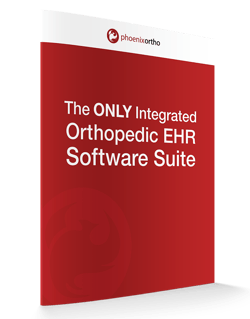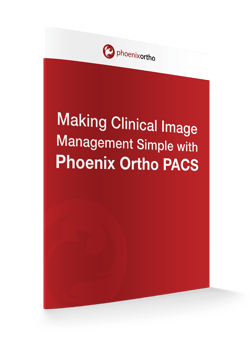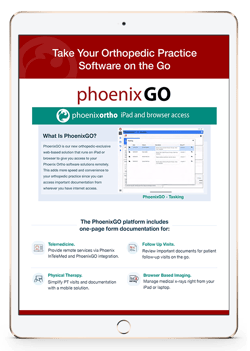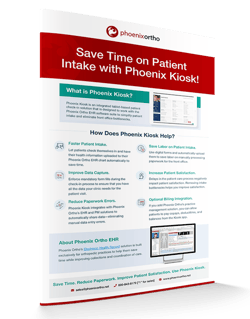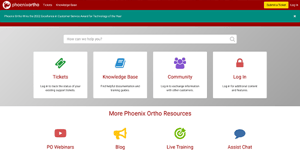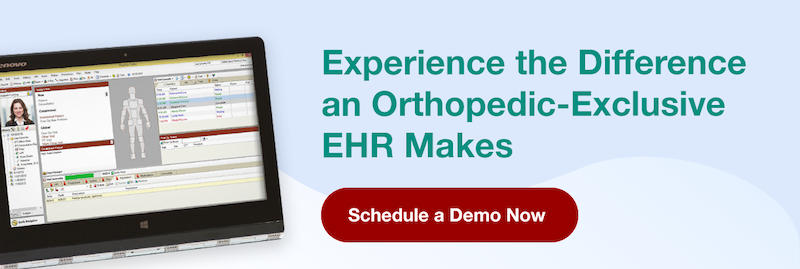Electronic Health Record (EHR) and Electronic Medical Record (EMR) software are supposed to make managing patient data faster, easier, and more accurate than the old hardcopy records systems medical practices used to rely on. However, many orthopaedic surgeons and practice managers seem to have problems with EHR systems—running into recurring issues that cause delays and impact the quality of care that they can provide their patients. This is part of the reason why organizations such as Software Advice created their EHR Buyer’s Guide to help healthcare facilities choose the right EHR system for their needs.
Why are some orthopaedic practices experiencing issues with EHR solutions? What can your practice do to eliminate EHR frustration factors? Here are a few Electronic Health Record issues that you might be familiar with:
Problems with EHR: Too Many Mouse-Clicks
EHR software is supposed to help clinics save time and effort on managing patient data. So, why is it that some practitioners have to spend precious time clicking through dozens of menus to find an important piece of information? Excessive mouse clicks are one of the most common EHR issues that medical practices of any specialization face. But, why is this EHR frustration factor so common?
Part of the problem is that many orthopaedic clinics are stuck using an EHR solution that was made for primary care. This means that the EHR will have forms, features, and workflows that just don’t matter to orthopaedic specialists. Because of these extraneous features and forms, orthopaedic physicians have to spend more time sifting through extra menus for issues that will never apply to them.
This is why, for the orthopaedic physician, it’s critical to find an EHR solution specifically developed for orthopaedics. It only makes sense that an orthopaedic-specific EHR will provide a better user experience than a generic, primary care-focused EHR.
Problems with EHR: Interfaced PACS Solutions Not Working
Picture archiving and communication system (PACS) solutions are a critical part of effective patient care. This is especially true for orthopaedic practices, since they often need extremely detailed images of a patient’s musculoskeletal system to make an accurate diagnosis and provide effective treatment. However, when interfacing a third-party PACS solution with their EHR system, many orthopaedic clinics may notice that a lot of time is wasted on correcting manual data entry errors from staff, who may miss one letter or number in the patient’s name, patient ID number, or the ordering physician’s name.
Worse yet, when the PACS software and the EHR fail to interface properly, the software developers for each will often simply blame one another for the issue rather than providing a fix. This is the problem with using software interfaces between two different products from two separate vendors: the programs aren’t necessarily built to work together and the interface joining the two may not work perfectly.
This is part of the reason why many healthcare facilities are looking for a comprehensive software solution. An all-inclusive software platform for practice management wouldn’t need to rely on unstable interfaces—each part of the platform would be built from the ground up to work together as seamlessly as possible. Take, for example, Phoenix Ortho’s all-inclusive PACS | EHR | PM platform, which combines image management, patient data management, patient check-in solutions, and collection solutions (including automatic billing code generation) to make all aspects of managing an orthopaedic practice easier.
Phoenix Ortho’s EHR and PACS solutions share a single database and are purpose-built to share information. These fully-integrated solutions do not require any manual data entry for patient ID or other info for the image order process. This eliminates errors when entering patient ID info during the image ordering process, thereby eliminating lost image files. Every update to one solution or the other is made by a team with full knowledge and understanding of the other—minimizing the risk of an update causing the two solutions to become incompatible.
Problems with EHR: Nobody Knows How to Use the Software
Not every doctor is comfortable with using software to manage patient data, place image orders, and schedule operations. For every “George Jetson” who takes to new tech like a fish to water, there’s a “Fred Flintstone” who’s just as happy doing things the old-fashioned way and sees the EHR as more of a bother than a help. While this EHR frustration factor has less to do with inherent problems with EHR design (unless the user interface is just plain bad), it is still a problem.
Part of the issue is that some doctors aren’t as familiar with technology as others and haven’t fully adapted to the explosive advances in information technology that have occurred over the last two and a half decades. However, not every EHR vendor makes the effort to help medical practitioners get familiar with their solution—they simply sell a software license and leave it at that.
The best fix for this is to partner with an EHR vendor who will take the time to make multiple members of the practice into experts (Super Users) on the software—experts who can then go on to train others in how to use the software. Phoenix Ortho’s “Train the Trainer” approach to the onboarding process does just that. Our team will provide training to turn several key staff members (Super Users) of the practice into EHR experts who can then teach others the ins and outs of the software.
These are just a few of the EHR issues that orthopaedic clinics may encounter. Are you having problems with EHR implementation and use in your orthopaedic practice? Reach out to the Phoenix Ortho team for help and advice today.
Schedule a 1:1
Get in touch with Phoenix Ortho to learn more about how you can save time, money, and mouse clicks with an orthopedic-specific EHR.





